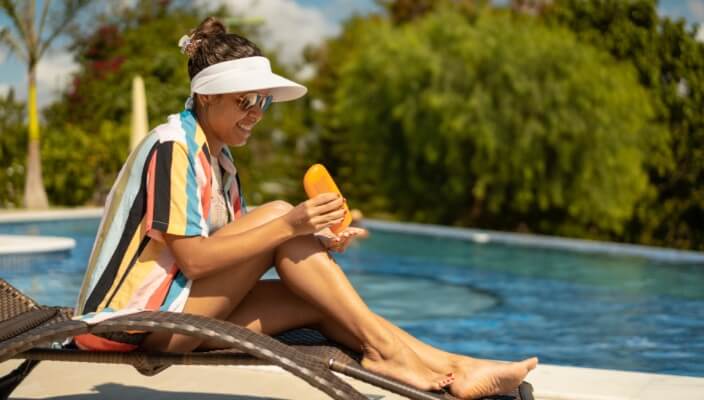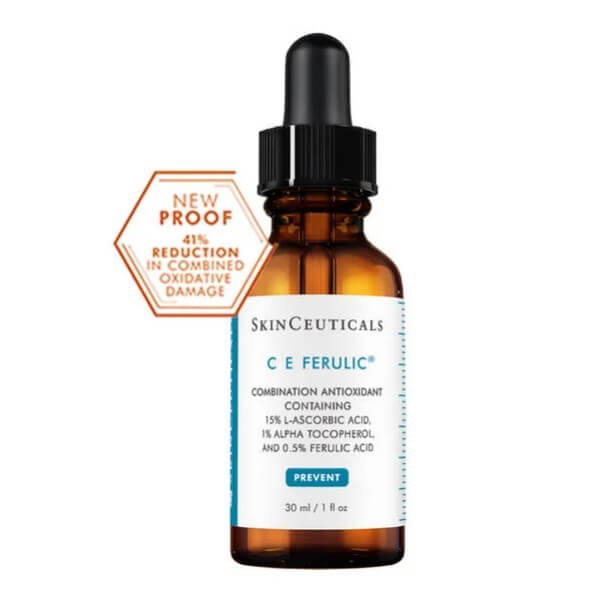FAQs about Sun Safety
Sun Sense Facts

The sun's ultraviolet (UV) radiation poses a significant risk, causing premature aging, sunburns, and escalating the chances of skin cancers. Understanding the importance of protective measures is crucial. From broad-spectrum sunscreen application to wearing protective clothing and seeking shade during peak hours, these practices mitigate UV exposure. Educating individuals about skin cancer risks, emphasizing regular skin checks, and promoting proactive sun safety habits is imperative.
Below, you'll find sun safety tips and tricks from our dermatologists. As well as facts and misconceptions to help you better protect your skin.
COMMON SUN SENSE MISCONCEPTIONS:
1. WHAT YOU CAN’T SEE CAN HURT YOU
The sun produces two kinds of rays, visible and invisible. The rays you can’t see (invisible) are known as ultraviolet A (UVA), ultraviolet B (UVB), and ultraviolet C (UVC). These invisible rays are dangerous to your skin and can cause suntan, sunburn and sun damage. Plus, UV rays can also cause cataracts, which are gradual clouding of the lens of the eye
2. SUNBATHING ISN'T SAFEThere are many different types of damage that can result from too much sun.
Here are some of the most common:
- Sunburn
- Wrinkles
- Freckles
- Tough, leathery skin
- Enlarged and visible blood vessels
- Easily bruised skin
- Skin Cancers
- Aging – Most people estimate your age based on the amount of sun damage to your skin!
It’s not the heat that causes the damage; it’s the ultraviolet light. It is important to remember that the sun is still dangerous even when it is not your typical summer day. UV rays may still be strong on cold or overcast days and can penetrate through cloud cover, fog, and haze. However, certain things do make UV light more intense. Here is a list of things that can increase the amount of UV light you are getting.
- Summer
- Time of day (10 a.m. – 3 p.m.)
- High altitudes
- Proximity to the equator
- Wind
- Reflected rays from water, sand or snow
- Some medicines including antibiotics and acne medicines can make skin more susceptible to sunburn & sun damage.
Besides damaging your skin, ultraviolet light damages the body’s ability to fight off early skin cancer using the defenses of the immune system. This fact is not widely known but is one of the most important reasons that sunscreens are necessary as you get older.
Watch: The Importance of Sunscreen and Vitamin C
Tanning Beds
ARTIFICIAL SUNLIGHT ISN’T SAFE
Indoor tanning salons use ultraviolet light, so they have the same side effects as the sun – including more rapid aging, and increased chance of melanoma and skin cancer. No kind of ultraviolet light is safe!Safe Tanning
A “HEALTHY” TAN ISN’T HEALTHY AT ALL
For years, people used to think that a suntan was a sign of good health. The fact is just the opposite. A suntan is the skin’s response to injury from sunlight. Although a suntan might look good on the surface, remember, it’s a sign of permanent injury.Everyone is At Risk
ALL SKIN IS AT RISK
There is a substance produced by the skin called melanin (mel-a-nin). When UV rays enter the skin, the skin protects itself by making more melanin, causing a tan. The more melanin you have in the skin the more protected you are from ultraviolet light. However, the protection is only equal to a sunscreen with a protection and is not a substitute for a sunscreen lotion.Practicing Sun Sense Every Day
Practicing sun sense and sun safety stands as a cornerstone in the prevention of skin cancer. By adopting consistent sun-protective habits, individuals can significantly reduce their risk of developing various forms of skin cancer. Emphasizing the use of sunscreen, seeking shade, wearing protective clothing, and undergoing regular skin checks empower individuals in taking charge of their skin health.
Our dermatologists urge everyone to prioritize sun safety as a fundamental aspect of daily life. By raising awareness, implementing preventive measures, and fostering a culture of skin protection, we collectively strive towards a future where the incidence of skin cancer is minimized, ensuring healthier lives for generations to come.
Featured Products for Sun Safety

SkinCeuticals C E Ferulic
C E Ferulic features a synergistic antioxidant combination of 15% pure vitamin C (l-ascorbic acid), 1% vitamin E (alpha tocopherol), and 0.5% ferulic acid to strengthen skin's natural protection from free radicals induced by environmental stressors. 1 fl oz / 30 mL

SkinCeuticals Physical Fusion UV Defense SPF 50
Physical Fusion UV Defense SPF 50 is a tinted, fluid sunscreen that leaves a radiant, even finish. It offers broad spectrum UVA/UVB protection for all skin types, including sensitive, while boosting skin's natural defenses to environmental stress using artemia salina, a plankton extract. This sunscreen is water resistant for up to 40 minutes. 1.7 fl oz / 50 mL



